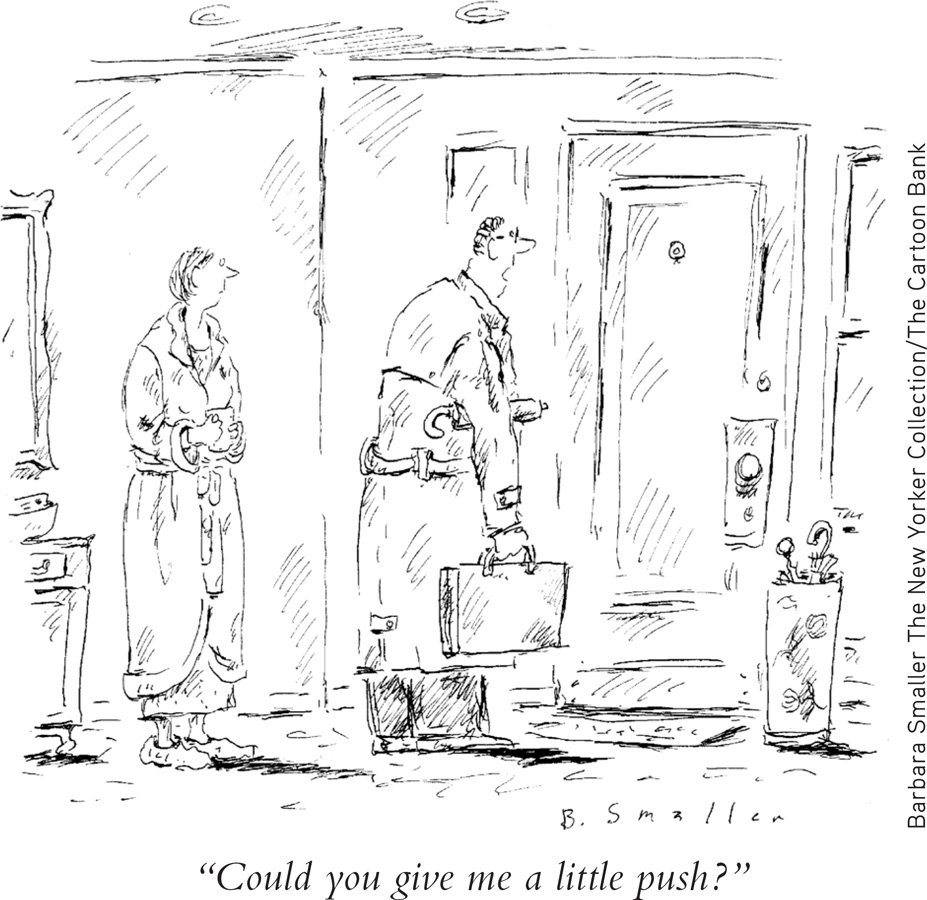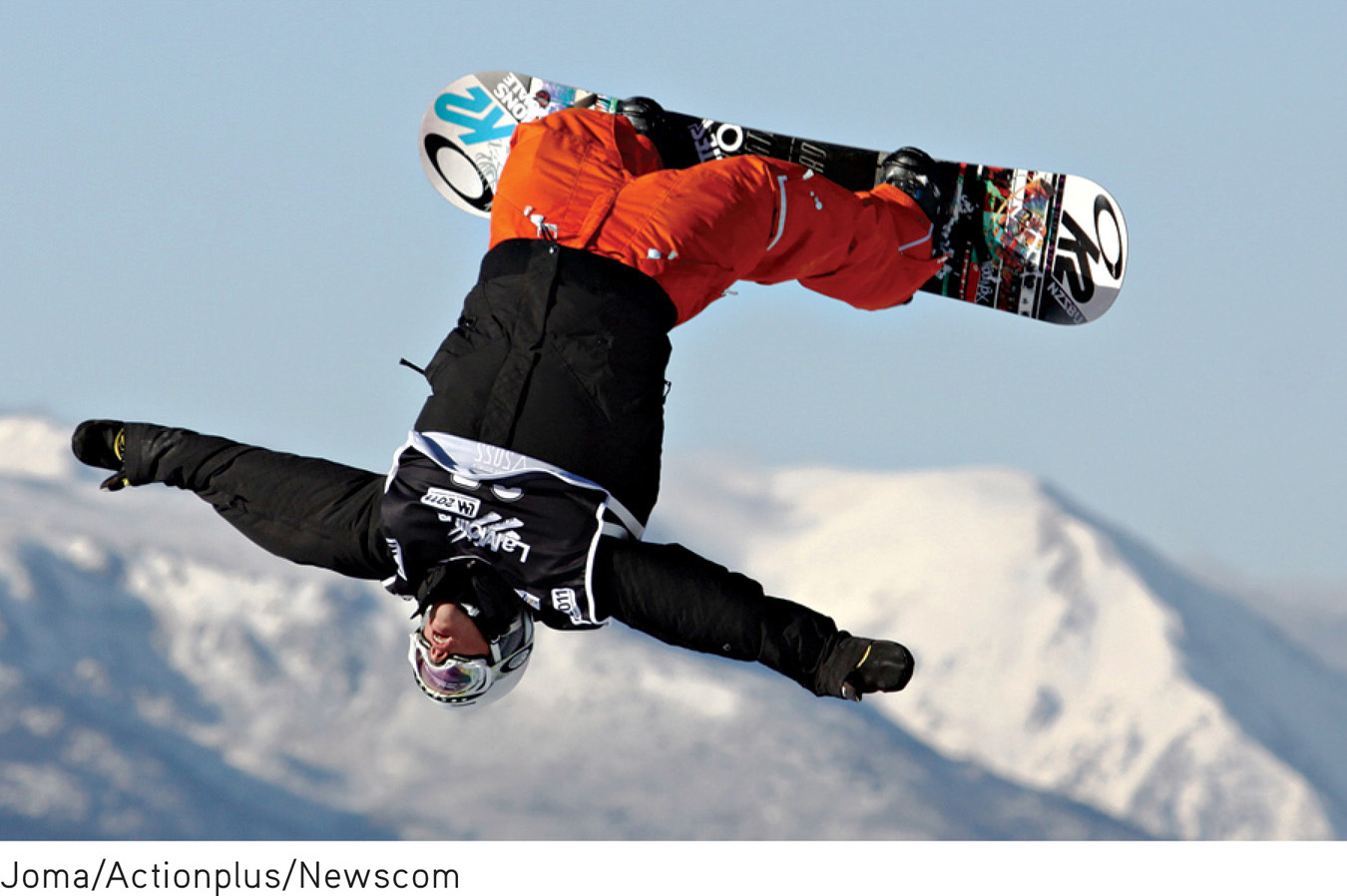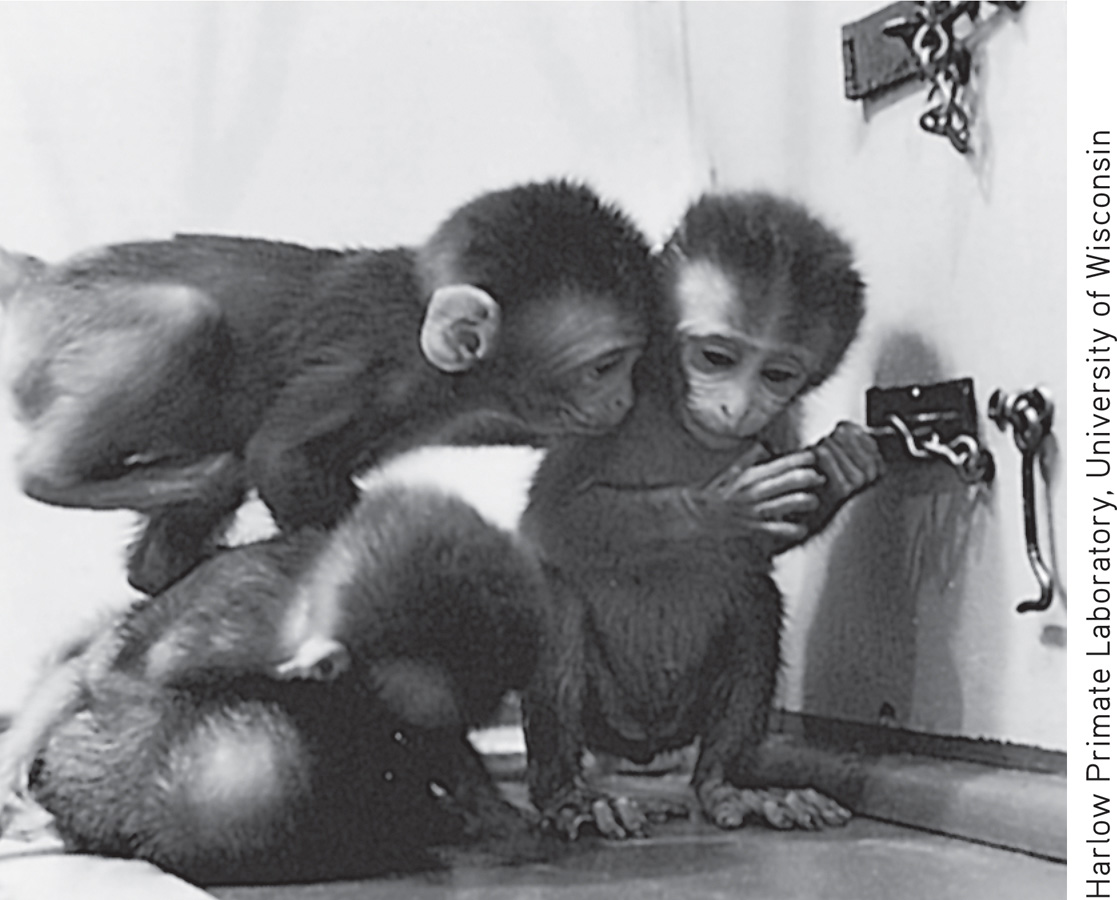8.1 INTRODUCTION:
Motivation and Emotion
KEY THEME
Motivation refers to the forces acting on or within an organism to initiate and direct behavior.
KEY QUESTIONS
What three characteristics are associated with motivation?
How is emotion related to the topic of motivation?
How do instinct, drive, incentive, arousal, and humanistic theories explain the general principles of motivation?
Why did your author Sandy travel halfway around the globe to make such a difficult journey? For that matter, what motivated you to sign up for college? Or to enroll in this class?
The topic of motivation includes the biological, emotional, cognitive, or social forces that act on or within you, initiating and directing your behavior. There are three basic characteristics commonly associated with motivation: activation, persistence, and intensity.
motivation
The biological, emotional, cognitive, or social forces that activate and direct behavior.

Activation is demonstrated by the initiation or production of behavior, such as Sandy’s decision to travel to the Himalayas as a medical volunteer. Persistence is demonstrated by continued efforts or the determination to achieve a particular goal, often in the face of obstacles, as evidenced by the volunteers slogging their way up steep, muddy trails, despite cold rain and wet equipment. Finally, intensity is seen in the greater vigor of responding that usually accompanies motivated behavior.
Motivation is closely tied to emotional processes, and vice versa. Emotions can drive a behavior, such as when we lash out in anger or, motivated by sympathy or compassion, reach out to help a child. Similarly, most of the volunteers made the arduous trek through the Himalayas because of the joy and satisfaction they experienced when they helped heal a sick woman or an injured child. We’ll take a detailed look at emotion in the second half of the chapter.
Many theories have been proposed to explain the general topic of motivation (Fiske, 2008; Forbes, 2011). We’ll begin our exploration of motivation with a brief survey of the most influential theories.
Instinct Theories
INBORN BEHAVIORS AS MOTIVATORS
In his famous text, Principles of Psychology, William James (1890) devoted a lengthy chapter to the topic of instinct. With an air of superiority, James noted that “no other mammal, not even the monkey, shows so large an array of instincts” as humans. The table shows some of the human instincts identified by James.
James’s List of Human Instincts
| Attachment | Resentment |
| Fear | Curiosity |
| Disgust | Shyness |
| Rivalry | Sociability |
| Greediness | Bashfulness |
| Suspicion | Secretiveness |
| Hunting | Cleanliness |
| Play | Modesty |
| Shame | Love |
| Anger | Parental Love |
Inspired by Charles Darwin’s landmark theory of evolution, early psychologists, like William James (1890) and William McDougall (1908), proposed that people were primarily driven by instincts. According to instinct theories, people are motivated to engage in certain behaviors because of evolutionary programming. Just as animals display automatic and innate instinctual behavior patterns called fixed action patterns, such as migration or mating rituals, human behavior was also thought to be motivated by inborn instinctual behavior patterns.
instinct theories
The view that certain human behaviors are innate and due to evolutionary programming.
TABLE 8.1 lists some of the human instincts that William James (1890) included in his famous text, Principles of Psychology. By the early 1900s, thousands of instincts had been proposed in one expert’s list or another to account for just about every conceivable human behavior (Bernard, 1924). (The early instinct theorists were, no doubt, motivated by a “listing instinct.”) But what does it mean to say that an assertive person has a “self-assertion instinct”?
The obvious problem with the early instinct theories was that merely describing and labeling behaviors did not explain them. By the 1920s, instinct theories had fallen out of favor as an explanation of human motivation primarily because of their lack of explanatory power. But the more general idea that some human behaviors are innate and genetically influenced remained an important element in the overall understanding of motivation. Today, psychologists taking the evolutionary perspective consider how our evolutionary heritage may influence patterns of many different human behaviors, including motivation (Cosmides & Tooby, 2013).
Drive Theories
BIOLOGICAL NEEDS AS MOTIVATORS

Beginning in the 1920s, instinct theories were replaced by drive theories. In general, drive theories asserted that behavior is motivated by the desire to reduce internal tension caused by unmet biological needs, such as hunger or thirst. The basic idea was that these unmet biological needs “drive” or “push” us to behave in certain ways that will lead to a reduction in the drive.
drive theories
The view that behavior is motivated by the desire to reduce internal tension caused by unmet biological needs.
Leading drive theorists, including psychologists Robert S. Woodworth (1918, 1921) and Clark L. Hull (1943, 1952), believed that drives are triggered by the internal mechanisms of homeostasis. The principle of homeostasis states that the body monitors and maintains relatively constant levels of internal states, such as body temperature, fluid levels, and energy supplies. If any of these internal conditions deviates very far from the optimal level, the body initiates processes to bring the condition back to the normal or optimal range. Thus, the body automatically tries to maintain a “steady state,” which is what homeostasis means. According to drive theorists, when an internal imbalance is detected by homeostatic mechanisms, a drive to restore balance is produced. The drive activates behaviors to reduce the need and to reestablish the balance of internal conditions.
homeostasis
(home-ee-oh-STAY-sis) The idea that the body monitors and maintains internal states, such as body temperature and energy supplies, at relatively constant levels; in general, the tendency to reach or maintain equilibrium.
drive
A need or internal motivational state that activates behavior to reduce the need and restore homeostasis.
Today, the drive concept remains useful in explaining motivated behaviors that clearly have biological components, such as hunger, thirst, and sexuality. However, drive theories also have limitations. For example, eating behavior can be motivated by factors other than the biological drive of hunger: People often eat when they’re not hungry and don’t eat when they are hungry. And how could drive theories account for the motivation to buy a lottery ticket, run a marathon, or leave home and family to volunteer for a month’s medical mission in a remote Himalayan village?
Incentive Motivation
GOAL OBJECTS AS MOTIVATORS
Building on the base established by drive theories, incentive theories emerged in the 1940s and 1950s. Incentive theories proposed that behavior is motivated by the “pull” of external goals, such as rewards, money, or recognition.
incentive theories
The view that behavior is motivated by the pull of external goals, such as rewards.
Incentive theories drew heavily from well-established learning principles, such as reinforcement, and the work of influential learning theorists, such as Pavlov, Watson, Skinner, and Tolman (see Chapter 5).
When combined, drive and incentive theories account for a broad range of the “pushes” and “pulls” motivating many of our behaviors. But even in combination, drive and incentive explanations of motivation still had limitations. In some situations, such as playing a rapid-response video game, our behavior seems to be directed toward increasing tension and physiological arousal. If you think about it, Sandy’s decision to travel to Nepal was not motivated by either an internal, biological drive or an external incentive.
Arousal Theory
OPTIMAL STIMULATION AS A MOTIVATOR
Racing your car along a barren stretch of highway, watching a suspenseful movie, shooting down the Super Slide at a water park—none of these activities seems to involve tension reduction, the satisfaction of some biological need, or the lure of some reward. Rather, performing the activity itself seems to motivate us. Why?

Arousal theory is based on the observation that people experience both very high levels of arousal and very low levels of arousal as being quite unpleasant. When arousal is too low, we experience boredom and become motivated to increase arousal by seeking out stimulating experiences (Berlyne, 1960, 1971). But when arousal is too high, we seek to reduce arousal in a less stimulating environment. In other words, people are motivated to maintain an optimal level of arousal, one that is neither too high nor too low (Hebb, 1955).
arousal theory
The view that people are motivated to maintain a level of arousal that is optimal—neither too high nor too low.
That the optimal level of arousal varies from person to person is especially evident in sensation seekers, who find the heightened arousal of novel experiences very pleasurable. According to psychologist Marvin Zuckerman (1979, 2007, 2009), people who rank high on the dimension of sensation seeking have a need for varied, complex, and unique sensory experiences. No doubt your author Don ranks high on this dimension, since he has tried skydiving and aerobatic flying. (He also once ate a handful of biodegradable packing peanuts, much to the horror of a college secretary.) Although such experiences can sometimes involve physical or social risks, sensation seekers aren’t necessarily drawn to danger—but rather to the experience of novelty or excitement. For example, college students who study abroad score significantly higher on sensation seeking than college students who stay in their country of origin (Schroth & McCormack, 2000).
sensation seeking
The degree to which an individual is motivated to experience high levels of sensory and physical arousal associated with varied and novel activities.
Like people, animals also seem to seek out novel environmental stimulation. Rats, cats, dogs, and other animals actively explore a new environment. In a series of classic studies, psychologist Harry Harlow (1953a, b) showed that a monkey will spend hours trying to open a complicated lock, even when there is no incentive or reward for doing so. And, when kept in a boring cage, a monkey will “work” for the opportunity to open a window to peek into another monkey’s cage or to watch an electric train run (Butler & Harlow, 1954).

Humanistic Theory
HUMAN POTENTIAL AS A MOTIVATOR
In the late 1950s, humanistic theories of motivation were championed by psychologists Carl Rogers and Abraham Maslow. Although not discounting the role of biological and external motivators, humanistic theories emphasized psychological and cognitive components in human motivation (Sheldon, 2008). Motivation was thought to be affected by how we perceive the world, how we think about ourselves and others, and our beliefs about our abilities and skills (Rogers, 1961, 1977).
humanistic theories of motivation
The view that emphasizes the importance of psychological and cognitive factors in motivation, especially the notion that people are motivated to realize their personal potential.
According to the humanistic perspective, people are innately motivated to realize their highest personal potential. Although innate and universal, the motivation to strive toward your highest potential could be jeopardized by the absence of a supportive environment—personal, social, and cultural (King, 2008). Later in the chapter, we’ll consider the most famous humanistic model of motivation, Maslow’s hierarchy of needs.
Test your understanding of Introduction and Motivational Concepts and Theories with
 .
.